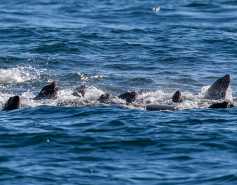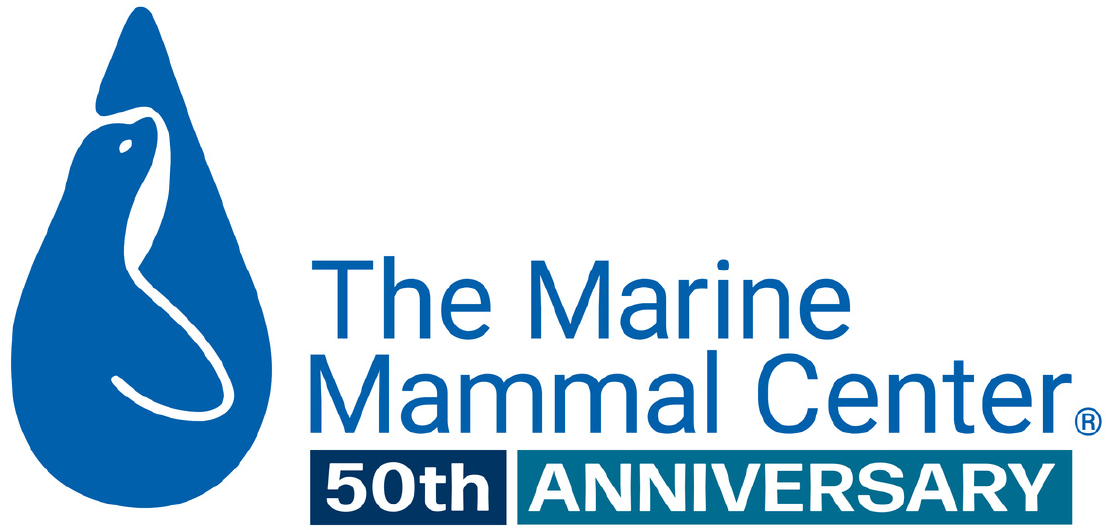
Predicting Prognosis in Wildlife Rehabilitation: A Case Study of Leptospirosis in Sea Lions
- Infectious disease
- Leptospirosis
Abstract
The spirochete bacterium Leptospira interrogans serovar Pomona is enzootic to California sea lions (CSL; Zalophus californianus) and causes periodic epizootics. Leptospirosis in CSL is associated with a high fatality rate in rehabilitation. Evidence-based tools for estimating prognosis and guiding early euthanasia of animals with a low probability of survival are critical to reducing the severity and duration of animal suffering. Classification and regression tree (CART) analysis of clinical data was used to predict survival outcomes of CSL with leptospirosis in rehabilitation. Classification tree outputs are binary decision trees that can be readily interpreted and applied by a clinician. Models were trained using data from cases treated from 2017 to 2018 at The Marine Mammal Center in Sausalito, CA, and tested against data from cases treated from 2010 to 2012. Two separate classification tree analyses were performed, one including and one excluding data from euthanized animals. When data from natural deaths and euthanasias were included in model-building, the best classification tree predicted outcomes correctly for 84.7% of cases based on four variables: appetite over the first 3 days in care, and blood urea nitrogen (BUN), creatinine, and sodium at admission. When only natural deaths were included, the best model predicted outcomes correctly for 87.6% of cases based on BUN and creatinine at admission. This study illustrates that CART analysis can be successfully applied to wildlife in rehabilitation to establish evidence-based euthanasia criteria with the goal of minimizing animal suffering. In the context of a large epizootic that challenges the limits of a facility's capacity for care, the models can assist in maximizing allocation of resources to those animals with the highest predicted probability of survival. This technique may be a useful tool for other diseases seen in wildlife rehabilitation.
Whitmer, E.R., Borremans, B., Duignan, P.J., Johnson, S.P., Lloyd-Smith, J.O., McClain, A.M., Field, C.L. and Prager, K.C., 2021. Classification and Regression Tree Analysis for Predicting Prognosis in Wildlife Rehabilitation: A Case Study of Leptospirosis in California Sea Lions (Zalophus californianus). Journal of Zoo and Wildlife Medicine, 52(1), pp.38-48.
Meet The Experts
{"image":"\/People\/Portrait\/cara-field.jpg","alt":"Cara Field","title":"Cara Field","text":"Director, Conservation Medicine","link_url":"https:\/\/www.marinemammalcenter.org\/person\/cara-field","link_text":"Read Bio"}

Related Publications
{"image":"\/Animals\/Wild\/California sea lion\/cropped-images\/sea-lions-in-water-photo-c-bill-hunnewell-2140-212-1308-1022-1603918234.jpg","alt":"large group of California sea lions in the water","title":"Detecting the Spread of Leptospirosis Through Asymptomatic Carriers","link_url":"https:\/\/www.marinemammalcenter.org\/publications\/detecting-the-spread-of-leptospirosis-through-asymptomatic-carriers","label":"Research Paper"}

{"image":"\/Animals\/Patients\/California sea lions\/cropped-images\/csl-by-bill-hunnewell-c-the-marine-mammal-center-7-0-1446-2827-2208-1603918668.jpg","alt":"California sea lion on pool ledge","title":"Effectiveness of Antibiotics in Treating Leptospirosis in California Sea Lions","link_url":"https:\/\/www.marinemammalcenter.org\/publications\/effectiveness-of-antibiotics-in-treating-leptospirosis-in-california-sea-lions","label":"Research Paper"}

Effectiveness of Antibiotics in Treating Leptospirosis in California Sea Lions
Read More{"image":"\/Animals\/Patients\/California sea lions\/cropped-images\/csl-by-bill-hunnewell-c-the-marine-mammal-center-5-0-1-3112-2431-1603919011.jpg","alt":"California sea lion diving into a pool","title":"First Report of Asymptomatic Carrier Transmission of Leptospirosis","link_url":"https:\/\/www.marinemammalcenter.org\/publications\/first-report-of-asymptomatic-carrier-transmission-of-leptospirosis","label":"Research Paper"}

{"image":"\/Animals\/Wild\/California sea lion\/cropped-images\/sea-lions-underwater-baja-shutterstock-186-4-4173-3260-1603919420.jpg","alt":"California sea lions underwater","title":"Seasonal Migration Contributes to Spread of Leptospirosis","link_url":"https:\/\/www.marinemammalcenter.org\/publications\/seasonal-migration-contributes-to-spread-of-leptospirosis","label":"Research Paper"}

Related News
{"image":"\/Animals\/Patients\/California sea lions\/2025\/cropped-images\/dottie-csl-photo-by-bill-hunnewell-218-0-1270-992-1759777087.jpg","alt":"California sea lion","title":"LA Times: Marine mammals are dying in record numbers along the California coast","link_url":"https:\/\/www.marinemammalcenter.org\/news\/la-times-marine-mammals-are-dying-in-record-numbers-along-the-california-coast","label":"In the News","date":"2025-10-03 02:00:00"}

LA Times: Marine mammals are dying in record numbers along the California coast
October 3, 2025
Read More{"image":"\/Animals\/Wild\/Humpback whale\/cropped-images\/humpback-whale-sea-lions-photo-c-bill-hunnewell-102-0-1270-992-1743014972.jpg","alt":"A California sea lion jumps out of the ocean next to a humpback whale showing its tail and another whale showing its back.","title":"What is the Loudest Animal on Earth? And Other Animal Trivia","link_url":"https:\/\/www.marinemammalcenter.org\/news\/what-is-the-loudest-animal-on-earth-and-other-animal-trivia","label":"News Update","date":"2025-03-26 07:00:00"}

{"image":"\/Animals\/Patients\/California sea lions\/2024\/csl-autumn-photo-by-chris-deimler-c-the-marine-mammal-center.jpg","alt":"A California sea lion with a small satellite tag on its back walks on a rocky beach toward the ocean.","title":"From Treating Sick Sea Lions to Tracking Them in the Wild: Follow Autumn","link_url":"https:\/\/www.marinemammalcenter.org\/news\/from-treating-sick-sea-lions-to-tracking-them-in-the-wild-follow-autumn","label":"Patient Update","date":"2025-02-27 15:23:46"}

From Treating Sick Sea Lions to Tracking Them in the Wild: Follow Autumn
February 27, 2025
Read More{"image":"\/Misc\/cropped-images\/leashed-dog-on-beach-shutterstock-10-10-5572-4352-1696014237.jpg","alt":"a golden retriever lying on a sandy beach with a leash and harness","title":"How to Keep Your Dog Safe on Beaches","link_url":"https:\/\/www.marinemammalcenter.org\/news\/how-to-keep-your-dog-safe-on-beaches","label":"News Update","date":"2023-09-29 02:00:00"}


